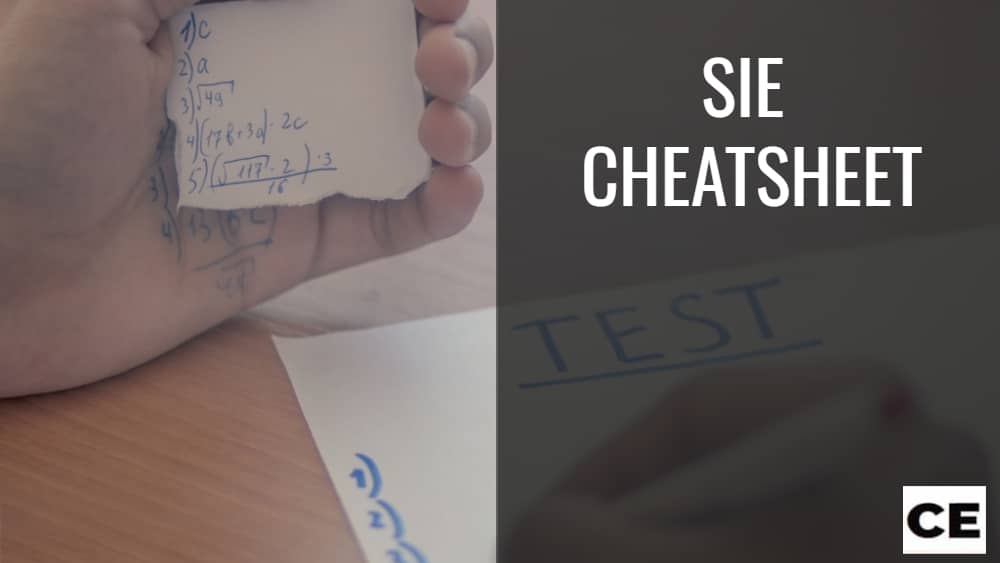SIE Study Guide Navigation
- SIE Study Guide Home
- 1.1 Regulatory organizations, establishments and participants in the capital market
- 1.2 Structure of capital markets
- 1.3 Understanding economic factors
- 1.4 Types of security offerings
- 2.1 Securities products in capital markets
- 2.2 Various types of investment risk
- 3.1 Settlement, trading, and corporate actions
- 3.2 Compliance considerations and customer accounts
- 3.3 Prohibited activities
- 4.1 Associated persons SRO regulatory requirements
- 4.2 Reportable events and employee conduct
To start this section, let’s look at strategies and orders that are often used in markets.
Before we do that, however, we need to understand two market terms – bearish and bullish.
No doubt you’ve heard of a bear and bull market.
Bearish and bullish, however, refer to an investor’s attitude towards it.
- Bullish: In this scenario, an investor believes that a particular stock or even a market’s value is probably going to rise. Those investors who are long a stock are said to be bullish as they want it to go up.
- Bearish: In this scenario, an investor believes that a particular stock or even a market’s value is probably going to fall. Those investors who are short a stock are said to be bearish as they want it to fall.
3.1.1 Strategies and Orders
There are three major types of orders – market/limited orders, time-restricted orders or fill-restricted orders.
Market order
A market order is pretty simple to explain.
It’s when an investor looks to buy or sell specific securities and isn’t hassled with paying (when buying) or taking (when selling) the current market price.
They don’t want a negotiation at all, just for the purchase or sale to be executed.
Limit order
Unlike a market order, with a limited order specific prices play a role both when buying or selling securities.
For example, an investor looking to sell their shares will do so only at a specific minimum price, while one buying shares will only purchase them at a specific price too.
Again, these are instructions passed on to their broker-dealer, and should the prices never be reached in both the buying and selling situation, the deal will not be executed by them.
Stop order (works in conjunction with limited orders)
When investors own stock, they may give their broker-dealer instructions to sell that stock if it drops below a specific price level.
This is known as a stop price.
This stop order becomes a market order when that level is reached, for example, and that means it must be executed as soon as possible.
A stop order is an excellent course of action for investors who have made a profit on a certain stock and want to protect that.
They can also be used in situations when markets crash and to stop losses from getting too large.
Day and GTC orders (time-restricted orders)
If investors put a stop order in place, the broker-dealer must also be told how long it should be in place.
If that’s just for the trading day, then a day order would be used.
When the stop order isn’t executed that day, once the market closes, it is canceled.
That’s true for orders that are partially filled as well.
Another option is a Good ‘Til Canceled (GTC) order.
Now the order remains until it’s carried out or the investor asks for it to be canceled.
GTCs are also canceled on the last business day of April and October unless otherwise requested by the client.
Market-at-open or market-on close orders (time-restricted orders)
These market orders either take place at the opening (market-at-open) or closing (market-on-close) of the day.
The customer is not guaranteed exact opening or closing prices, but a price that is as close as possible to either the first or last price of the day.
Discretionary and non-discretionary orders (time-restricted orders)
Discretionary orders see a client provided a registered representative with the power of attorney,
These powers are limited but do allow that representative to make trading decisions without the need to consult the client.
Accounts like this are called discretionary accounts but there obviously is paperwork to complete beforehand and the client must sign off on this way of trading.
If a client doesn’t want a discretionary account, all potential trades must be discussed with them first.
Fill-or-kill order (fill-restriction order)
With this type of order, the instruction passed is to immediately fill the order and if this cannot be done, to kill, or in other words cancel it.
There is never a partial execution of an order if it is issued as a fill-or-kill.
This is often called a FOK order.
Immediate-or-cancel order (fill-restriction order)
Similar to a FOK order, with an immediate-or-cancel order, partial execution of the order is allowed.
So should only a portion of the order be filled, that will be allowed to go ahead.
The portion that isn’t executed is then canceled, not the whole order.
This is known as an IOC order.
All-or-none order (fill-restriction order)
These can be either day or GTC orders but must be executed in full.
Because they do not have to be filled straight away, they are different from FOK orders.
As an example, a day order operating with an all-or-none stipulation can be held till the end of the day to be filled up in its entirety.
This is also known as an AON order.
All fill restriction orders only apply to limited orders.
That’s because there is a time frame involved.
Market orders, however, are executed immediately at the best price available.
Solicited and unsolicited orders
If a client knows the kind of stock they want to buy and contacts their broker-dealer to make the purchase, this is called an unsolicited order.
Should this happen the other way around and the broker-dealer tells a client to purchase a specific stock, this now becomes a solicited order.
Note that in order to comply with regulations, all order tickets need to be marked as either solicited or unsolicited.
Quotes
Quotes provided for securities are for the most part two-sided – a bid and an ask/offer.
With most, the size, which is the number of shares available, will be provided too.
Bid
The highest amount that someone is prepared to pay for the security is known as the bid price.
On a bid, the size will indicate the number of shares they are willing to buy.
The bid price determines the price a seller will receive if they opt to sell their shares.
Ask/Offer
The lowest amount that someone will sell securities for is known as the ask/offer price.
It will include the size or number of shares they are willing to sell as well.
The ask/offer price is the price a buyer will have to pay if they want to buy those shares.
Settling purchase and trade transactions
FINRA’s Regular Way rules control how purchase and sale transactions must be settled and must be followed.
Sometimes, however, there are exceptions.
- T+2: This is the most allowed time after a stock has been purchased under Federal Reserve Board Regulation T. It stipulates that stock must be paid for two days after the initial purchase.
- T+1: This takes place one business day after the transaction
- T=0: Here, the buyer and seller agree the transaction is settled on the same day. Also known as a cash transaction.
Corporate records
What is a corporate record and why is it important when it comes to quotes, either bid or ask/offers?
Well, to start, a corporate record is a requirement by law.
It’s a way of keeping track via a list of who owns shares and bonds in a company, for example.
Updated every day, corporate records are kept by transfer agents.
Trading strategies
Now that we’ve covered the various offerings and orders, let’s focus on a few critical trading strategies that are open to investors.
Note, these are not all of them, just the most popular.
Long-short equity
Taking a long position in a stock means an investor (in this case, usually a hedge fund) expects it will rise.
If they take a short position, then they expect the stock to fall.
For the most part, owning a stock is related to taking a long position in it while a short position is favored by those who have borrowed a stock.
Naked options
This is when an investor doesn’t own the underlying security but sells an option on it.
Should the option be exercised, then the security needs to be bought by the seller – at the current market price – so they can deliver it to the buyer at the strike price of that option.
Naked call writing
This is when an investor doesn’t own the underlying security but sells a call option on it.
They do this because they believe they can collect a premium or maximum gain on the security because, on the expiration date, it will trade lower than the option strike price.
If it doesn’t the losses can be massive.
Naked put writing
This is when an investor doesn’t own the underlying security but sells a put option on it
They do this because they believe they can collect a premium or maximum gain on the security because, on the expiration date, it will trade above the option strike price.
Huge losses can be incurred should this not happen.
Covered options
These are different from naked options because in this case, the investor owns the underlying security on the options contract that they are selling.
With covered call writing, the investor sells the call option on securities they have purchased.
In covered put writing, they have enough cash on hand to buy the security they are selling the put option on.
3.1.2 Understanding Investment Returns
To understand investment returns, we must first be able to differentiate cash dividends from mutual funds and stocks.
Let’s refresh our minds on the different kinds of dividend disbursement dates.
- Declaration date: This is when a company gives the go ahead for a dividend payment. The dividend is said to be declared on this date.
- Ex-dividend date (ex-date): Declared by FINRA, this is usually one business day before the record date. In most cases, to qualify for the dividend, a customer must buy the stock two business days before the record date. Or, the stock can be bought before the ex-dividend date to receive the dividend.
- Record date: Those who own the record or stock will receive the dividend distribution on the record date
- Payable date: On this date, dividend checks are sent to stockholders by the disbursing agent. Note it is only stockholders who are on the books of the owners of the stock as of the record date who will receive checks. As for tax on dividends, that happens for the year they were paid.
Interest on bonds
Many investors choose corporate, government, or municipal bonds as their investment vehicles.
These provide a return on investment (ROI) at a stated interest rate each year as the bond matures.
Cash dividends on stocks
Stocks earn investors cash dividends from a company which is determined by the corporate board of directors.
These dividends are based on how well the company performed during the financial year.
While they differ from year to year, stock in a company generally means an ROI each year for stockholders.
Stock dividends
Sometimes, a corporate board will pay out a bonus to stockholders.
This is never in the form of cash but instead in stock dividends.
All this is rewarding stockholders with extra stock in the company that they didn’t have to purchase themselves.
Stock splits
This takes place when stock prices rise and breakthrough into triple-digits (more than $100 per unit).
Often, the board of the company will want to keep their stock at affordable levels.
To do this, the stock is split.
For example, if stock is tracking at $100 and it goes through a 2 to 1 split, the price will drop to $50.
Shareholders don’t lose out either as the shares they hold double in this situation so they lose no value at all.
There is a reverse stock split as well.
If we apply that to the situation above, we will see the share price rise to $200 but the number of shares halved.
Adjustments to market price and cost basis
Here, the market price drops.
If applied to our example, above, the market loses half of its value but again stockholders are compensated as they will own double the shares they did.
Again, there are no losses for investors in a situation like this.
Realized vs unrealized capital gains
A realized gain is when the stock an investor has purchased rises in price and then they sell it.
An unrealized gain sees the purchased stock rise in price, but the investor instead hangs on to it.
3.1.3 Understanding Trade Settlement
The settlement process starts the moment that the execution order is placed on a customer’s trade.
It defines the process that must take place so that the parties involved in a transaction receive what is theirs from that transaction.
Simply put on a sale of shares, for example, a buyer must receive the shares and the seller receives the share value in monetary terms.
But there is another reason why a settlement is in place.
And that’s to ensure that the trade doesn’t take long to get over the line and come to completion.
Settlement dates
Settlement usually occurs one or two days after the trade date and at the end of the business day.
We’ve already spoken about this a short while ago with a T+1 settlement that occurs one day after the trade and a T+2 settlement two days after the trade.
What determines whether it is one day or two?
Well, that’s all got to do with the particular type of security that was traded.
For example, a T+1 settlement will be for Treasury securities such as T-bills, T-bonds and T-notes
As for T+2 settlements, those are for municipal debt, stocks, and bonds (corporate issues, agency securities, and GSE securities).
Settlements like this are also known as a regular way settlements and they cover treasury, municipal and corporate issues.
Cash settlement trade
A cash settlement is often called a same-day settlement.
On the day that it is executed, the seller must deliver the securities purchased by the buyer who in turn will make the payment.
While cash settlements are rare today, they still do occur from time to time.
For one to take place, however, the buyer and seller must agree to it ahead of time.
Don’t confuse a cash settlement, however, with a cash trade.
That simply doesn’t include margin borrowing as the buyer pays “cash” for their trade.
Options trades and exercises
The trading of an option sees settlement happen the next business day (T+1).
When exercised by the owner, however, a required time completion is adhered to.
While the workings thereof are similar and it’s also called a “settlement”, this is not to be confused with a settlement of trade as we have discussed above.
When it comes to the equity option exercise, the settlement happens after the exercise by the second business day (T+2).
The delay is there to help with acquiring and delivery of the stock.
When an index option is exercised, no securities are delivered.
Instead, this T+1 settlement sees the owner receive cash equal to the in-the-money amount from the writer.
Good delivery
What is good delivery?
Well, the name gives an excellent clue.
It’s all got to do with the rules that guide physical stock and bond delivery.
Certificates delivered must be signed by owners whose names are on the face of the certificate.
The signature must mirror what is found on the certificate too otherwise the delivery won’t be considered to be good.
So if there is a middle name on the certificate and not an initial, for example.
When certificates are mailed, they aren’t signed on the back.
Instead, a stock or bond power (depending on what is being traded) is used.
Stock power must identify the specific certificate they are for and include details of the issuer, the number of shares, and the number of the certificate.
3.1.4 Types Of Corporate Actions
The outstanding number of shares a corporation has can change due to actions that it decides to take.
In some situations, a vote is required to take these actions while in others, that’s not necessary.
Let’s look at some of these corporate actions and what they entail.
Mergers
A merger sees two or more companies combine into a new company.
This means that they combine not only their operations but their assets too.
But what about the shareholders of both companies?
How is that handled?
Well, if a merger takes place, the old shares for each of the companies that are merging are canceled.
New shares for the new company that comes out of the merger are then distributed to the investors.
Acquisition
An acquisition differs from a merger in the fact that one company takes over another.
That includes their operations and assets.
Shares in the company that carried out the acquisition are received by the shareholders of the company that was acquired.
All other shares are then canceled.
Spin-off
A spin-off is when a subsidiary company is formed from the operations and assets of a corporation, for example, hence the name spin-off.
Shares of the newly formed company are issued to the shareholders of the corporation.
Stock dividends
When profits are reinvested by a company for the purpose of business instead of paying a cash dividend to investors, it’s called a stock dividend.
It’s a typical action taken by companies that are growing and expanding.
But what do stock dividends mean to investors?
Well, following the distribution of stock dividends, they will own more shares in the company.
And while it’s not a monetary value that they receive, they still are better off for it, although the cost per share will be downward adjusted.
Receiving a stock dividend is not subject to any tax consequences.
When those extra shares are sold, however, the stockholder selling them will be taxed on that transaction.
Forward stock split
Stock price rises are welcomed by companies.
But should they get too high, that may be a disadvantage when it comes to the trading of the stock.
In order to make the stock price appealing again, a company might decide on a forward stock split.
This will see the number of shares increase but their value reduced.
So if one share costs $1, a forward stock split would now mean that becomes two shares costing $0.50.
In other words, share prices come down but there is no loss in value to investors.
These splits can either be even or uneven.
In an even split, the ratio of shares could be 2:1 or 3:1, for example.
In an uneven split, the ratio is 5:4 or 4:3.
Reverse stock split
A reverse stock split takes place when share prices have fallen and investors don’t want to buy the shares because of that.
In this situation, a company can use a reverse stock split to improve the price of the shares while lowering their number.
In other words, the price per share will go up as the number of shares goes down.
Reverse splits can be either even or uneven just as we described above.
There are no tax implications associated with a reverse split either.
Buyback
This is when a company opts to buy shares that are on the open market and are being sold by existing shareholders of that company.
There are many reasons why a buyback would occur.
More often or not, however, a buyback reduces the supply (or the number of shares) on the market.
This will then push up the price of the shares that are still available for sale.
Many corporations prefer share buybacks to paying dividends as a way to increase shareholder value.
Tender offer
A tender offer is made when someone wants to buy securities directly and not on the secondary market.
The offer for those securities is made to those who own them.
Often, tender offers are used by companies that want to acquire another.
This allows them to buy shares of that company in either a friendly or hostile takeover.
Tender offers can also be made on convertible securities.
Proxy voting
Annual general shareholders meetings must be held by every publicly traded company.
Here, management presents decisions that impact the company and will require shareholders’ approval to go ahead.
To garner shareholders’ support or disapproval, a vote is held for each decision that needs to be taken.
While many shareholders will attend the meeting, not all of them can.
In this case, they might vote in proxy, either through the mail but more likely electronically in today’s day and age.
They may also vote using a proxy.
In this case, someone attends the meeting and votes on their behalf.
Tax implications of corporate actions
We’ve covered this a little already but it’s always good to recap.
Generally, there are no tax implications when it comes to spin-offs, acquisitions, or mergers.
That’s because no dividends are paid as shareholders only receive stock.
Should they receive stock and a cash payment, the cash portion will be subject to tax because it is seen as a capital gain.
Buybacks and tender offers, however, for the most part, are cash offers.
These are treated in the same way as when securities are sold and because they are a capital gain (or loss, perhaps), there are tax implications associated with them.
Corporate actions: Recall notification requirements
The SEC requires that issuers need to give notice to shareholders for the following corporate actions:
- Stock dividends
- Cash dividends
- Reverse split
- Forward split
- Rights of warrants offering
Should a notice be sent for any of the above, it must include the following information:
- The security title
- The declaration date
- The date of determining holders (these are shareholders who will receive any distributions, for example)
- When the payment or distribution will be paid
- The amount to be paid (only for a cash dividend_)
- The rate of the dividend (only for a stock dividend)
- The rate of distribution for a forward or reverse split
Notice must be given at least 10 days before the corporate action takes place.









